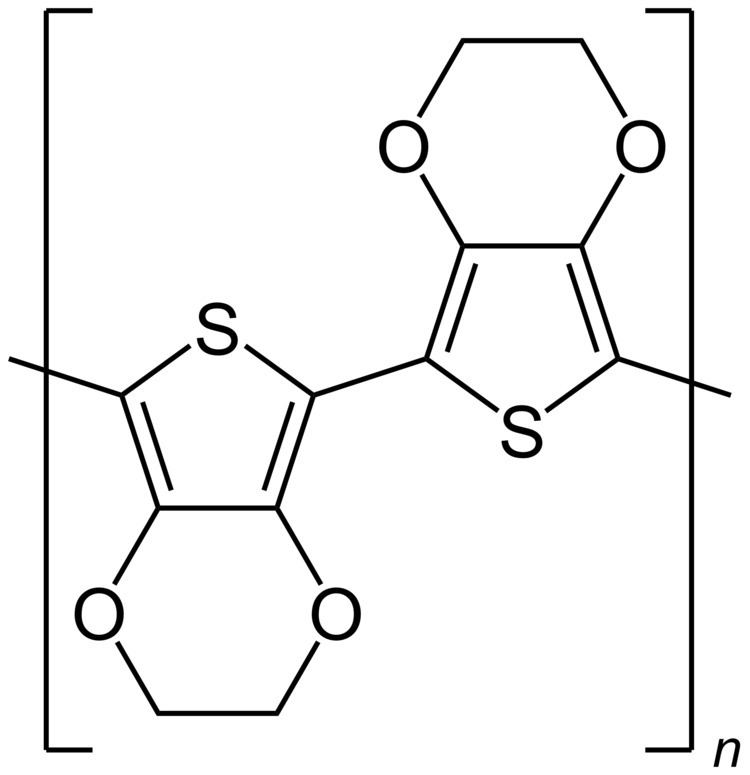 | ||
Poly(3,4-ethylenedioxythiophene) or PEDOT (or sometimes PEDT; IUPAC name poly(2,3-dihydrothieno[3,4-b][1,4]dioxane-5,7-diyl)) is a transparent conducting polymer based on 3,4-ethylenedioxythiophene or EDOT monomer. Conductors in this class are employed in LCDs and solar cells, among others uses. Advantages of this polymer are optical transparency in its conducting state, high stability and moderate band gap and low redox potential. A large disadvantage is poor solubility which is partly circumvented in the PEDOT:PSS composite, and the PEDOT-TMA material.
In the field of electroanalysis, conductive polymers are widely employed as coatings conferring the electrode systems antifouling properties and possibly activating electrocatalytic redox processes. Among different conducting polymers, PEDOT has emerged in recent years, thanks to characteristics previously reported. In addition, PEDOT coatings possess high stability over different charge and discharge cycles and can be electrogenerated directly on a conductive support (Pt, Au, glassy carbon, indium tin oxide,…) in organic solvents or in aqueous solution. The enhancement of the electrochemical signals relative to the oxidation of different analytes, when using PEDOT modified electrodes with respect to bare support has been reported in recent publications.
In one study PEDOT nanofibers are produced from vanadium pentoxide nanofibers by a nanofiber seeding method. In this procedure EDOT is dissolved in an aqueous solution of camphorsulfonic acid (CSA) and a vanadium pentoxide nanofiber sol-gel and radical cationic polymerization is initiated by addition of ammonium persulfate. The resulting polymer precipitates from solution and has a general composition (PEDOT)(CSA)0.11-(HSO4)0.12(Cl)0.11(H2O)0.19. Washing with dilute hydrochloric acid removes the vanadium compound. The presence of the vanadium pentoxide seeds make the difference between the formation of PEDOT nanofibers (100 to 180 nanometer diameter and one to several micrometres long) and the formation of a more conventional granular morphology. When applied to a solid substrate such as PET, PEDOT non-woven films have slightly less optical transparency and about half the conductance of commercial PEDOT:PSS / PET films.
Research
2008 - Monash University, Melbourne - Cathodes in fuel cells
Renato Seeber group, University of Modena and Reggio Emilia, Italy
